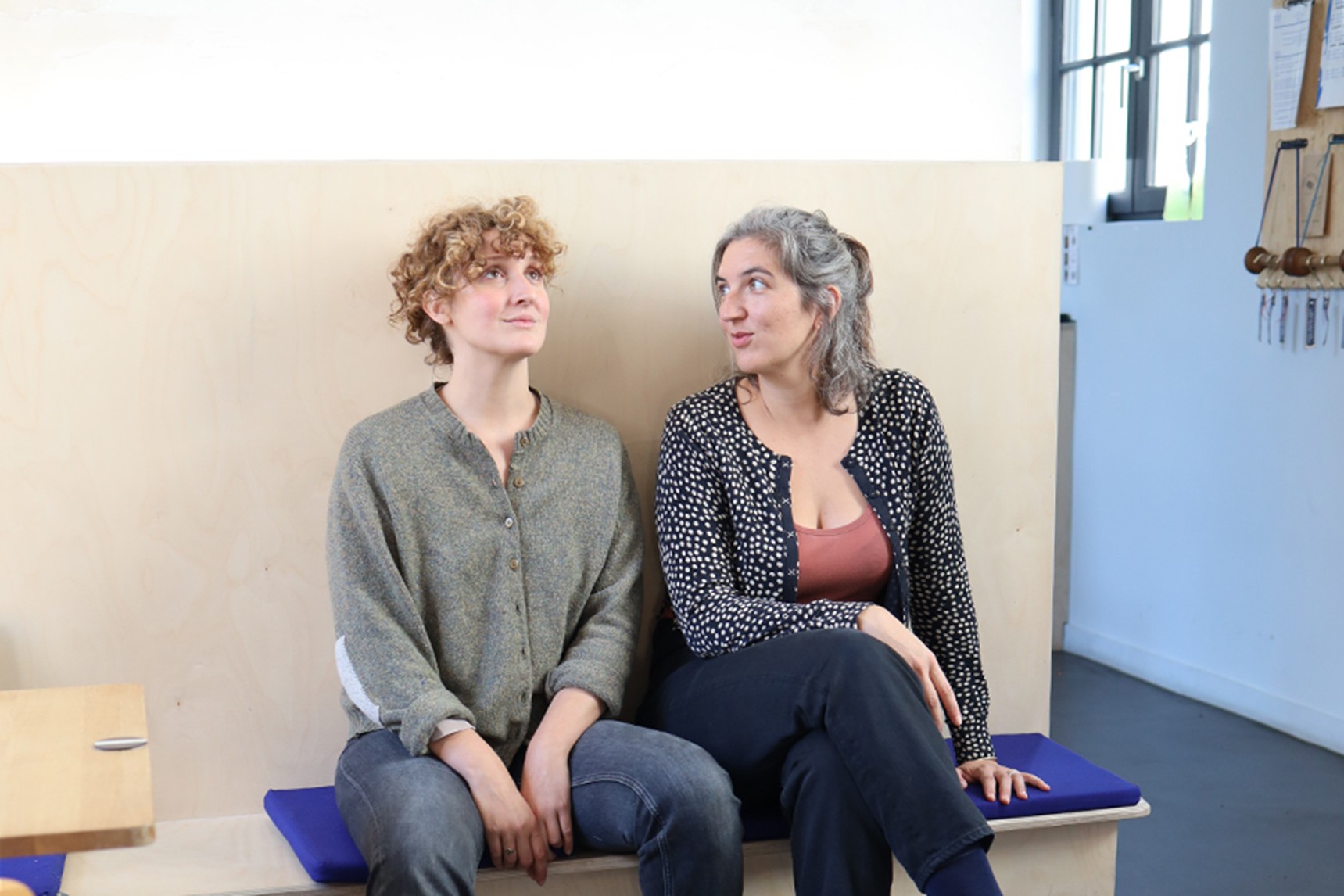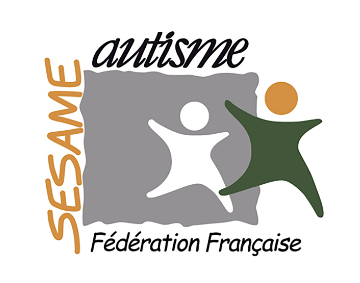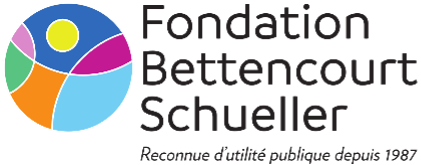Aurélia Martin & Mathilde Van Steenkiste
Architect and designer
September-October 2025

© Lucie Vidal
- Craft & Design
- Atlanta
“With the support of researchers and innovative institutions focused on childhood, we will draw inspiration from the compositions, colors, and materials of Gee’s Bend quilts to design a collection of educational textile tools intended for neurodivergent children.“
We founded, in 2023, Les Grandes, an architecture and design studio specializing in issues related to disability and mental health, based in Paris. This studio was born from our desire to care for both occupants and spaces to foster a more inclusive society. We both specialize in eco-design and circular economy: Aurélia in design and Mathilde in architecture.
The studio emerged from our collaboration after the Transat residency, supported by Les Ateliers Médicis, focusing on the patient library in a psychiatric hospital. During this residency, we developed tools enabling patients to visualize and appropriate a common space.
Research and experimentation are important parts of our practice. We are the 2024 recipients of the Delano & Aldrich/ Emerson grant, which will allow us to explore different senior living arrangements in the USA.
For Villa Albertine, The Quilt and Care residency project aligns with our ongoing personal research: the development of communication tools in fabric for Aurélia and sensory-friendly space design for individuals with autism for Mathilde. This multidisciplinary project will combine healthcare research, textile design, and object design.
Aurélia Martin is a designer, scenographer and teacher based in Paris. She has participated in several residencies with Les Ateliers Médicis and the French Institute : Création en cours #3, Transat #2, Transat #3, Institut français de Goma RDC with a personal research project: “Speaking Fabric, Textile as a Communication Medium”
Mathilde Van Steenkiste is an architect based in Paris who specializes in the connection between the environment and autism as applied to architecture. She designed Notre Café, Marais in Paris, an innovative project which takes care of young people with autism. She primarily works with the nonprofit and medical-social sectors.
“Quilt and Care” is a research, meeting, and exchange project centered on two themes: textiles and autism.
The aim of this research project is to develop a collection of textile objects, in the form of quilts, designed to help neurodivergent children develop fine motor skills.
This research project will be carried out in collaboration with the Souls Grown Deep Foundation, Emory University, and the Marcus Autism Center in Atlanta. It currently has the support of the Children’s Museum of Atlanta and Mill Springs Academy. This six-week research project is organized in two phases:
— Quilting
Since the mid-19th century, African American women known as the Gee’s Bend quilters, from a small rural town in Alabama with a population of 700, have been making quilts. Their patterns are simple and asymmetrical, featuring bold color combinations.
Originally using work clothes, feed sacks, or leftover fabric, the Gee’s Bend quilters—who often represent up to four generations within the same family—pass down both technical knowledge and a rich history. This community stands out for its preservation of traditional skills and the mutual support it provides. These quilts serve as testimonies to the life of the community, illustrating both significant moments in its collective history and more personal narratives.
— Research on Childhood and Neurodivergence
Autistic children display unique characteristics in sensory processing. The visual and tactile systems are two of the seven sensory systems that are particularly developed in individuals with autism spectrum disorder (ASD). The importance of sensory experiences is undeniable; they play a crucial role in child development, environmental understanding, communication, and judgment.
Vision and touch are the most heightened senses in individuals with ASD. The assembly of fabrics with varied colors and textures offers a stimulating learning medium for children, enabling them to develop fine motor skills.
This residency gives us the opportunity to strengthen a network of practices on both sides of the Atlantic.
Our research project focuses on the southern United States and takes place across four states.
The first two weeks will be spent in immersion in Mississippi and Alabama, centered on quilting—its history and its archives. To familiarize ourselves with quilting techniques, we will take part in a workshop led by two quilters from Gee’s Bend, Miss China and Miss Mary Ann, in Raymond, Mississippi.
This five-day workshop will allow us to meet women from across the United States, each with distinct quilting practices. We will explore different techniques and different stitches.
Following the workshop, we will travel to the Mississippi Department of Archives and History Museum in Jackson to discover their quilt collection and gain an overall understanding of the importance of this medium of expression in the United States. We will then spend several days immersed in Gee’s Bend, meeting the village’s various collectives and learning more about the history of the quilters and textiles. The Airing of the Quilts Festival will take place during our stay. On this occasion, we will have the opportunity to meet curators from the Souls Grown Deep Foundation.
In Atlanta and North Carolina, we have identified research sites focused on autism and health. Our goal will be to understand the different innovations developed by researchers, academics, and designers. We aspire to create a recreational and educational textile tool inspired by quilts, enabling neurodivergent children to develop fine motor skills.
Georgia and North Carolina are particularly well known for their care and research related to neurodivergent children. Institutions such as the Marcus Autism Center and Mill Springs Academy may welcome us for discussions and help us refine our project.
“You can see struggle, joy, sadness, happiness—all these different emotions in these quilts.”
— Loretta Pettway Bennett (born 1960), quilter from Gee’s Bend.
In partnership with

Notre Café Paris, Le Marais

Fédération Française Sésame-Autisme

Fondation Bettencourt Schueller
As a family foundation and a public-interest foundation at the same time, the Fondation Bettencourt Schueller has chosen to “take talents to the top” to contribute to France’s success and influence.
To this end, the Foundation seeks, selects, supports and promotes women and men who are rethinking our future in three fields that make a tangible difference to the common good: life sciences, the arts and an inclusive society.
With a philanthropic mindset, the foundation takes action through prizes, donations, personalized support, effective communication and co-created initiatives.
Since the foundation was founded in 1987, it has awarded prizes to 676 laureates and supported more than 1,400 projects led by talented individuals, teams, associations and organizations.
For more information: www.fondationbs.org | Twitter: @Fondation_BS | Instagram: @fondationbettencourtschueller | Facebook: @BettencourtSchuellerFoundation | #TalentFondationBettencourt


